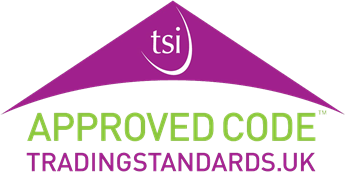
Recently there have been a number of reports which claim that many residential buy-to-let landlords are turning to Houses of Multiple Occupation (HMOs) in order to increase their potential rental yields.
Where a landlord converts single occupancy dwellings in to multiple dwellings, this creates a HMO. This is achieved through a conversion of the property to have three, four, five or more separate rooms for young professionals or students to rent. The schemes are particularly popular in heavily populated areas of urban cities such as London, Manchester and Glasgow.
HMOs can potentially increase the rental yield on a property, but the renovations required to bring the property up to scratch are often costly and time consuming. The process can be laborious and requires you to jump through a series of hoops in order to complete, so here we’ll look at some of the things to consider when deciding whether to get your property licensed as a HMO.
Your home can become a licensed HMO if all of the following apply:
- It is at least 3 storeys high and at least 5 tenants live there, forming more than 1 household. Tenants share a toilet, bathroom or kitchen facilities.
- A “household” is defined as either a single person or members of the same family who live together. A family includes people who are married or living together, including people in a same-sex relationship or relatives (for instance grandparents, aunts, uncles, siblings, step-parents or step-children).
So for example, if a house was 5 storeys high but only home to four people then it could not be classed as a licensed HMO.
For more information, please see the official government web page here.
Higher rental yield
As a HMO, your property can often yield higher rental profits as you are essentially renting out the same amount of space to more people. A typical two bedroom property, for example, may fetch £650 per month but this could increase to £200 a month for up to four renters, increasing your rent by £150 a month, or £1800 per year.
The rental yield can improve over a number of properties should a landlord decide to convert their entire portfolio.
Unreliable tenants
Often with HMOs there can be a tendency for short term tenants to apply and therefore tenant turnover can be high. HMOs are often seen as short-term arrangements for singles, couples and families, and this can mean gaps in occupancy across the year. It is also true that HMO tenants are often foreign nationals and this can cause some issues with the authorities and tax if the situation goes unregulated.
Cost and time of licensing
To convert a property from single occupancy to a HMO can cost upwards of £30,000. This means it can take a minimum of 12 months for profits to increase, but it is more likely that you will be waiting for approximately 36 months to recover your investment via an increased rental yield.
You should also take into consideration the time it takes to convert your property. Although the conversion could ultimately lead to an increase in rent of £150 per month, if the conversion takes 3 months and you lose 3 months’ worth of rent this cost should be included in the upfront cost of paying for the conversion.
Planning permission
Most local councils will require you to submit planning permission before any work starts and this can be costly and time consuming to achieve, depending on which council you deal with.
Further to this, there is the issue of council tax and how the occupants pay for it, in addition to the payment of utility bills and the upkeep of communal areas. Will these bills be paid by you or will the tenants be liable for them?
Resale value can be minimal
Should you need to sell your property quickly then the likelihood is that you will find it difficult and the resale value may be lower than the figure you could command for a single occupancy property. Only other landlords or investors would have an appetite for purchasing a ready-made HMO and the cost of converting the property back into single occupancy would eat into any potential profits.
Overall HMOs can be a cost-effective way to maximise rental yields but the potential downsides are numerous. Although there are many landlords who have made a success of converting their existing portfolios it should be noted that there are also plenty of horror stories. We would advise that if you’re thinking of converting, give serious thought to location, demand and long term goals before embarking on a potentially risky investment.




